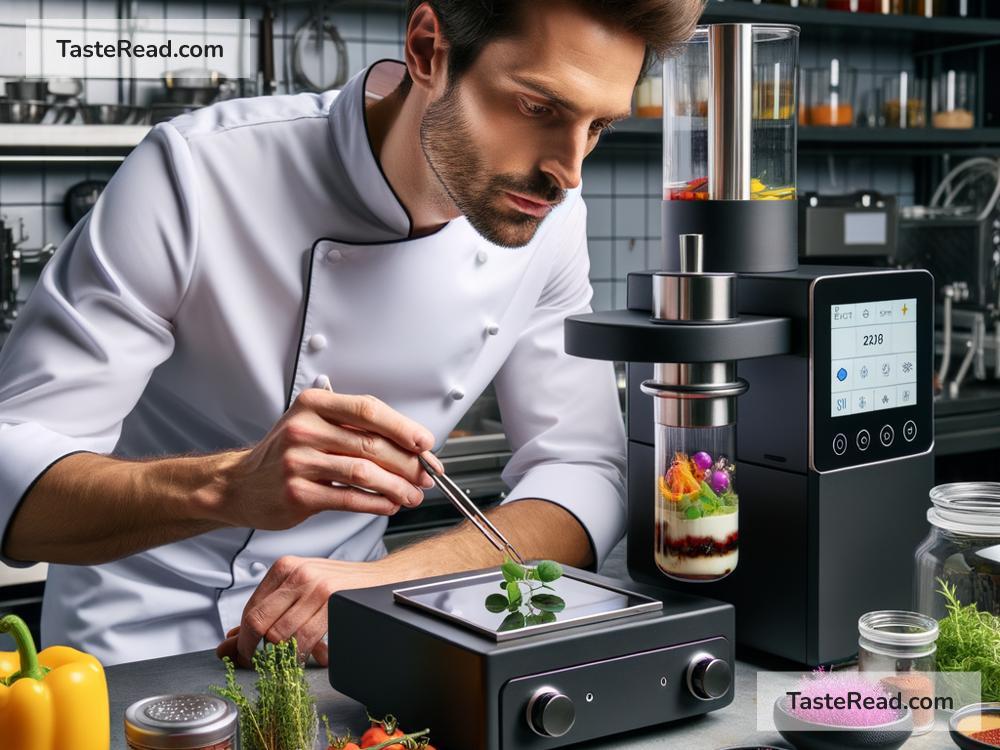The Science of Cooking with Chemical Vision: Techniques and Tips
Cooking is an art, but it’s also a science! When we prepare food, we’re not just mixing ingredients to make them taste good—we’re triggering chemical reactions that transform flavor, texture, and appearance. This is what makes cooking magical. By understanding the “science of cooking,” we can improve our results and even experiment more confidently in the kitchen. Let’s explore the fascinating concept of “chemical vision” and how it can help you master cooking techniques and create delicious meals.
What is Chemical Vision?
Chemical vision is the ability to understand how chemical reactions work in food while cooking. When we heat, cool, mix, or season ingredients, we change their chemical structure at a microscopic level. These changes affect everything—the smell of the dish, how it feels on your tongue, and how well it holds together.
For example, think about when you fry an egg. The clear, runny egg white turns opaque and solid. This happens because the heat causes proteins in the egg to “unfold” and bond together—a process called denaturation. This simple chemical reaction is something we see all the time but don’t often think about.
Having “chemical vision” doesn’t mean you need a science degree—just knowing a few key ideas can help you become a better cook and even solve common kitchen problems.
Chemical Reactions that Every Cook Should Know
Here are some basic chemical reactions that happen in cooking. Once you know what’s going on, you can make smarter choices in the kitchen.
1. Maillard Reaction (The Secret to Browning and Flavor)
The Maillard Reaction is what makes foods taste incredible when they’re browned. It happens when sugars and proteins in food react under heat. This is why grilled steak, toasted bread, and roasted vegetables develop deep, rich flavors.
Tip: To maximize the Maillard Reaction, make sure food is dry before cooking (pat your steak or veggies with a paper towel) and use high heat. Avoid overcrowding the pan, as this traps steam and prevents browning.
2. Caramelization (Sweet Science)
Caramelization is the process where sugar breaks down under high heat, creating a golden-brown color and a sweet, complex flavor. This happens when you make caramel, roast sweet potatoes, or sauté onions.
Tip: Use medium heat to slowly caramelize foods like onions. For sugar-based recipes like caramel, don’t stir too much—it can cause the sugar crystal structure to reform, making your caramel grainy.
3. Protein Denaturation (From Raw to Cooked)
Denaturation is when heat, acids, or mechanical actions like whisking change the shape of proteins in food. This is what turns soft egg whites into firm, fluffy meringue or raw fish into delicate ceviche after it’s marinated in lime juice.
Tip: Be careful not to overcook proteins like steak, chicken, or fish. Over-denaturing can make them tough and dry. A meat thermometer can be a helpful tool to get the perfect doneness.
4. Fermentation (Flavor Boost Through Chemistry)
Fermentation happens when microorganisms like bacteria or yeast break down sugars in food. This process creates tangy and complex flavors in foods like yogurt, kimchi, sourdough bread, and beer.
Tip: Try experimenting with homemade fermented foods like pickles or kombucha. Make sure to keep things clean to avoid bad bacteria from growing.
5. Emulsification (Keeping Oil and Water Together)
Emulsification is when you mix oil and water-based liquids together into a stable mixture. Mayonnaise, salad dressing, and hollandaise sauce are emulsions.
Tip: Use an emulsifier like mustard or egg yolk to help ingredients bind together. Adding oil slowly while whisking helps stabilize the mixture.
Tips for Cooking with Science in Mind
Now that you know some key chemical processes, let’s discuss tips to bring “chemical vision” into your kitchen.
1. Understand the Role of Temperature
Temperature is one of the most important factors in cooking chemistry. Low and slow cooking, like braising, can break down tough proteins and make meat tender. On the other hand, high heat triggers rapid reactions like browning and crisping.
Tip: Use a meat thermometer or an oven thermometer to ensure precision. Small temperature adjustments can make a big difference.
2. Balance Acid and Base
The pH level of your ingredients affects flavor and texture. Acidic foods, like lemon or vinegar, can tenderize meat and brighten dishes. Baking soda (a base) can make baked goods rise or enhance browning.
Tip: Improve tenderizing by marinating meat in an acidic mixture. But don’t marinate too long—it can turn meat mushy!
3. Season Strategically
Salt isn’t just about flavor—it’s also a chemical tool. Salt draws moisture from food, making vegetables crisp and helping proteins keep their structure.
Tip: Season in layers, adding salt throughout cooking rather than all at once. Don’t forget to taste as you go!
4. Experiment and Learn
Science is about testing and curiosity. Don’t be afraid to try new things or tweak a recipe. Take notes on what works and what doesn’t—it’s like doing a fun experiment in your kitchen.
Tip: Start small. Change one element of a recipe and see what happens. For example, you could try swapping lemon juice with vinegar or cooking an ingredient at a slightly different temperature.
Cooking Science = Better Meals
Cooking with chemical vision isn’t complicated—it’s about noticing and understanding what’s happening as you cook. A little knowledge of the science behind food lets you troubleshoot problems, perfect your favorite recipes, and confidently try new techniques. Plus, learning the “why” behind your cooking makes it even more rewarding.
So next time you’re in the kitchen, pay attention to the magic of science shaping your dish. You might just discover the secret to making your meals tastier, your textures better, and your kitchen experiments more successful. Happy cooking!


